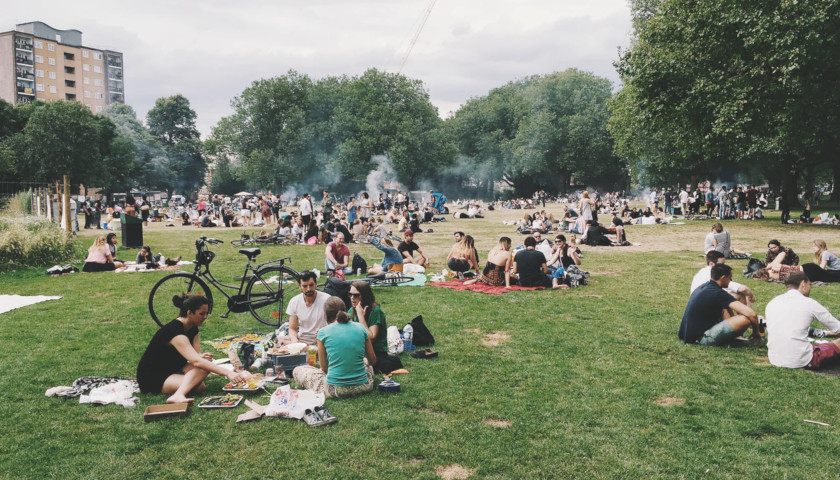by Alexandra Hudson
This week, Americans across the country and beyond prepare to celebrate the 243rd anniversary of America’s Declaration of Independence from Great Britain. Some are hosting large parties with fireworks. Others are organizing more intimate barbecues with neighbors, family, and friends. Still others are curating menus for a very American Fourth of July tradition: the picnic.
We are all familiar with its rituals. Al fresco dining on a blanket with nibbles, beverages — a cold beer for some, chilled champagne for others — sandwiches, fruits, and more. It invokes warm feelings of gratitude for family and togetherness.
However, the picnic was not always this way — so pervasive and available to all. The concept of the picnic as we know it far predates the word, though its etymological origins are unknown (some think it comes from the French words piquer, which means “to peck,” and nique, “a small amount”).
The concept of an elegant outdoor meal dates back to the Middle Ages and is associated with the aristocratic hunt. As a delightful History Today article recounts, the picnic finds its origins in the rarefied realms of France’s aristocracy. The picnic was originally a meal shared with friends — and not necessarily one outside — where each party was expected to contribute: a comestible, a libation, or cold hard cash.
Apparently, the romantic proto-socialist Jean-Jacques Rousseau enjoyed picnicking, although it is difficult to imagine him — known, unsurprisingly for someone of a socialist persuasion, for being rather entitled — contributing in any way! The picnic was a means of intellectual refinement for France’s chattering classes.
The French Revolution changed all that, however. First, after 1789, royal parks became open to the public. Dining in parks became a popular pastime among France’s newly enfranchised citizenry.
Second, France’s elite fled the raging masses and the guillotine. Many settled in England, and brought the picnic with them. There, they kept their lavishness and method of having attendees contribute, but also added theater performances at the picnics — which, funnily enough, became so popular that a notable theater owner, Richard Brinsley Sheridan, lobbied to have picnics outlawed.
Yet as Sheridan was having them banned, England’s middle classes took up a picnic frenzy, moving them outdoors. Scholars think that this shift in picnicking was an attempt by the middle classes to be more like the French and English aristocrats. After this shift, picnicking became less associated with music and theater and more associated with our modern understanding: a shared meal outdoors with family and friends.
Within a few decades, the picnic made its way across the pond to the United States, and the ritual was quickly incorporated into the lives of America’s upper middle class. It was a reprieve from civilization by withdrawing into bucolic nature.
The 20th century was the picnic’s heyday, however. As its popularity grew, the market accommodated: picnic baskets began to be mass produced, and the contents of a picnic began to be standardized. Most importantly, people bought leisure with their newfound wealth.
Thanks to the rise of prosperity and commercial society, picnicking was finally something for all to enjoy, not only the rarefied elite. Thanks also to specialization, which has increased productivity, we now all have the leisure time to enjoy an activity that was once a pursuit of the wealthy alone.
The social and legal equality that we enjoy as Americans is one thing we can be especially thankful for about our country this Fourth of July, as we join friends and family around a picnic.
– – –
Alexandra Hudson is a Research Fellow for the American Insitute for Economic Research. She earned her graduate degree from London School of Economics as a Rotary Scholar and is working on a book on civility.




